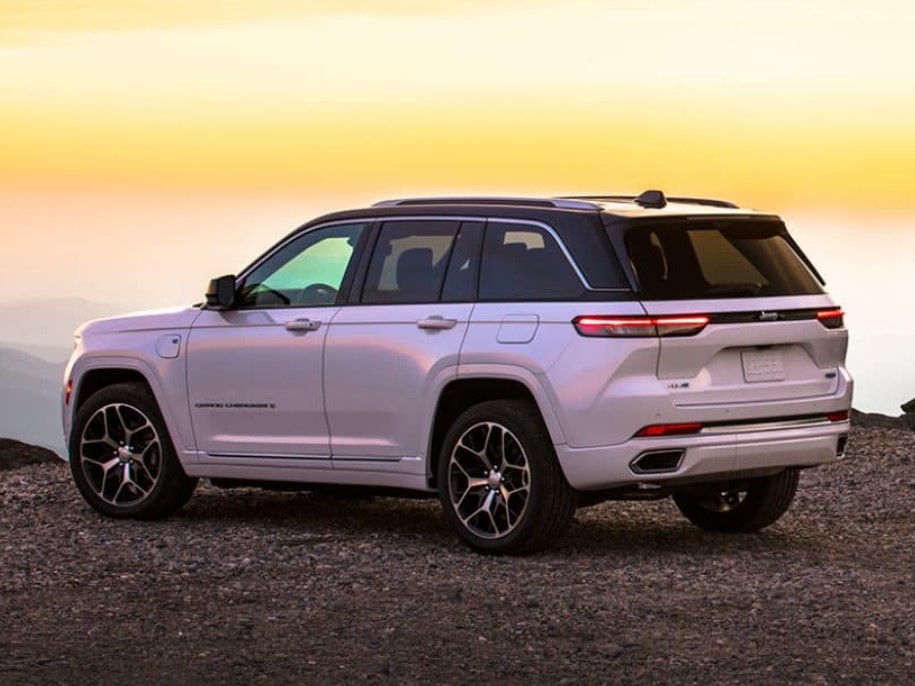Jeep Cherokee Lease Payment: Your Comprehensive Guide to Driving America’s Iconic SUV
Jeep Cherokee Lease Payment: Your Comprehensive Guide to Driving America’s Iconic SUV jeeps.truckstrend.com
The Jeep Cherokee, with its rugged capability, comfortable interior, and distinctive style, has long been a favorite among SUV enthusiasts. While outright purchase remains an option, an increasing number of drivers are turning to leasing as a flexible and often more affordable way to get behind the wheel of a new Cherokee. Understanding the intricacies of a Jeep Cherokee lease payment is key to making an informed decision that aligns with your budget and lifestyle. This comprehensive guide will demystify the leasing process, providing you with the knowledge to navigate terms, secure favorable deals, and confidently drive away in your dream Jeep.
What is a Lease Payment and How Does it Work for a Jeep Cherokee?
Jeep Cherokee Lease Payment: Your Comprehensive Guide to Driving America’s Iconic SUV
At its core, leasing a vehicle like the Jeep Cherokee means you’re essentially paying for its depreciation over a set period, plus finance charges and various fees. Unlike buying, where you own the vehicle outright, a lease allows you to drive a new car for a fixed term (typically 24, 36, or 48 months) without the burden of full ownership.
Here’s how the key components factor into your Jeep Cherokee lease payment:
- Capitalized Cost (Cap Cost): This is essentially the selling price of the vehicle, often negotiable, just like a purchase. A lower cap cost directly reduces your monthly payment.
- Residual Value: This is the projected value of the Jeep Cherokee at the end of the lease term, expressed as a percentage of its MSRP. It’s determined by the leasing company and is influenced by factors like the vehicle’s reliability and market demand. A higher residual value means you’re financing less of the car’s total value, leading to a lower monthly payment.
- Money Factor: This is the leasing company’s equivalent of an interest rate, often expressed as a very small decimal (e.g., 0.00200). To convert it to an annual percentage rate (APR), multiply by 2400 (e.g., 0.00200 x 2400 = 4.8% APR). A lower money factor means lower finance charges and thus lower monthly payments.
- Lease Term: The length of your lease agreement (e.g., 36 months). Shorter terms often have higher monthly payments but mean you get a new car more frequently. Longer terms can lower payments but might increase the risk of wear and tear charges or exceeding mileage limits.
- Mileage Allowance: Leases come with an annual mileage limit (e.g., 10,000, 12,000, or 15,000 miles per year). Exceeding this limit typically incurs a per-mile penalty (e.g., $0.20-$0.25 per mile).
- Taxes and Fees: These include sales tax (which can be applied monthly or upfront depending on your state), acquisition fees (an administrative charge from the leasing company), documentation fees, registration, and license plate fees.

Your monthly lease payment is primarily calculated by taking the difference between the capitalized cost and the residual value (the depreciation amount) and spreading it over the lease term, then adding the finance charge (based on the money factor) and applicable taxes and fees.
Benefits of Leasing a Jeep Cherokee
Leasing a Jeep Cherokee offers several compelling advantages, making it an attractive option for many drivers:

- Lower Monthly Payments: Compared to financing a purchase, lease payments are typically significantly lower because you’re only paying for the depreciation during the lease term, not the entire vehicle’s value.
- Drive a New Car More Often: With lease terms often lasting 2-4 years, you can regularly upgrade to the latest Jeep Cherokee model, enjoying new features, technologies, and styling.
- Warranty Coverage: Most lease terms align with the manufacturer’s bumper-to-bumper warranty, meaning you’re covered for most unexpected repairs throughout your lease period, saving on potential maintenance costs.
- Less Hassle with Resale: At the end of the lease, you simply return the vehicle to the dealership (assuming it meets wear and tear guidelines and mileage limits), avoiding the complexities and potential depreciation risks associated with selling a used car.
- Potential Tax Advantages: For business owners, lease payments can often be deducted as a business expense, offering tax benefits not available with a purchase.

Key Factors Influencing Your Jeep Cherokee Lease Payment
Understanding what drives your monthly payment empowers you to negotiate effectively and find the best deal.
- Manufacturer’s Suggested Retail Price (MSRP): While not the direct "capitalized cost," the MSRP is the starting point. Negotiating a lower selling price for the vehicle before it’s converted into a lease (i.e., lowering the capitalized cost) is the single most effective way to reduce your monthly payment.
- Residual Value: As mentioned, a higher residual percentage translates to a lower payment. While you can’t negotiate the residual value itself (it’s set by the leasing company), it’s good to be aware of how strong the Cherokee’s residual value is relative to competitors.
- Money Factor: This is negotiable to a certain extent. Dealerships often mark up the money factor from the base rate offered by the leasing company. Aim for the lowest possible money factor, especially if you have excellent credit.
- Down Payment (Cap Cost Reduction): Putting money down reduces the capitalized cost, thus lowering your monthly payments. However, if the vehicle is totaled, you might lose that upfront money, as insurance pays out to the leasing company. Many experts recommend putting little to no money down on a lease.
- Lease Term and Mileage Allowance: These are trade-offs. A shorter term means higher payments but less commitment. A lower mileage allowance means lower payments, but ensure it aligns with your driving habits to avoid overage fees.
- Current Incentives and Rebates: Jeep often offers special lease deals, including lease cash or reduced money factors, especially at month-end or year-end. These incentives can significantly lower your effective monthly payment.
How to Calculate Your Jeep Cherokee Lease Payment (Simplified)
While complex formulas exist, here’s a simplified way to understand the core components of your monthly lease payment:
- Calculate Depreciation Portion: (Negotiated Capitalized Cost – Residual Value) / Lease Term in Months
- Calculate Finance Charge: (Negotiated Capitalized Cost + Residual Value) x Money Factor
- Add Taxes and Fees: Calculate applicable sales tax on the sum of depreciation and finance charge, plus any prorated upfront fees.
Your Monthly Payment ≈ (Depreciation Portion) + (Finance Charge) + (Taxes & Prorated Fees)
Always remember to factor in the "due at signing" amount, which typically includes the first month’s payment, acquisition fee, security deposit (sometimes waived), and title/registration fees.
Navigating Lease Deals and Special Offers for the Jeep Cherokee
Securing the best Jeep Cherokee lease payment requires a bit of savvy:
- Check Manufacturer Websites: Start by visiting Jeep’s official website. They often advertise national lease specials with specific terms, down payments, and monthly rates.
- Compare Local Dealerships: Don’t limit yourself to one dealer. Use online tools and call multiple dealerships in your area to compare their current lease offers on the specific Cherokee trim you’re interested in.
- Understand the Fine Print: Pay close attention to the advertised "due at signing" amount, mileage limits, and any hidden fees. A low monthly payment might come with a hefty upfront cost.
- Time Your Lease: Dealerships are often more motivated to meet sales quotas at the end of the month, quarter, or year. Holiday sales events can also yield attractive incentives.
Important Considerations Before Leasing a Jeep Cherokee
Before signing on the dotted line, be aware of these crucial aspects:
- Mileage Limits: Be realistic about your driving habits. Exceeding your annual mileage allowance can lead to costly penalties at lease end. If you drive a lot, consider a higher mileage package upfront, as it’s usually cheaper than paying overage fees.
- Excessive Wear and Tear: Leasing agreements define what constitutes "normal" wear and tear. Dents, scratches, torn upholstery, or unapproved modifications can result in charges when you return the vehicle. Consider purchasing an optional "wear and and tear" waiver if available.
- Early Termination Penalties: Breaking a lease early is almost always very expensive. You’ll likely be responsible for the remaining payments, plus significant termination fees. Only lease if you’re confident you’ll keep the vehicle for the full term.
- Insurance Requirements: Leasing companies typically require comprehensive and collision insurance coverage with specific liability limits, often higher than state minimums. Factor these costs into your budget.
- End-of-Lease Options: At the end of your Jeep Cherokee lease, you usually have three choices:
- Return the Vehicle: Inspect it for damage, pay any outstanding fees, and walk away.
- Purchase the Vehicle: If you love your Cherokee, you can buy it for the predetermined residual value (plus any purchase option fee).
- Lease or Purchase a New Vehicle: Trade in your leased Cherokee for a new one.
Tips for Getting the Best Jeep Cherokee Lease Deal
- Know Your Credit Score: A strong credit score (typically 700+) is essential for securing the lowest money factor.
- Negotiate the Capitalized Cost: Treat the capitalized cost as if you’re buying the car outright. Research the fair market value (using sites like Edmunds or Kelley Blue Book) and negotiate the price down.
- Understand All Numbers: Don’t just focus on the monthly payment. Ask for the capitalized cost, residual value, and money factor. This allows you to compare offers apples-to-apples.
- Shop Around: Get quotes from at least three different dealerships. Pit them against each other (politely) to encourage competitive offers.
- Consider a Certified Pre-Owned (CPO) Lease: While less common for Jeeps, some dealerships offer leases on CPO vehicles, which can significantly lower monthly payments while still offering warranty benefits.
- Avoid Excessive Down Payments: While a down payment lowers monthly payments, it’s generally riskier in a lease. If the vehicle is stolen or totaled, your down payment might be lost.
Potential Challenges and Solutions
- Challenge: High Monthly Payment:
- Solution: Negotiate a lower capitalized cost, ask for a lower money factor, consider a longer lease term (e.g., 48 months), or choose a lower trim level.
- Challenge: Exceeding Mileage Limits:
- Solution: If you anticipate going over, negotiate a higher mileage allowance upfront. If you’re already over, consider buying the vehicle at lease end, as the per-mile penalty might make up for the cost difference.
- Challenge: Unexpected Damage/Wear and Tear:
- Solution: Take photos of the vehicle at lease inception. Have any minor damages repaired before returning the vehicle, as independent repairs are often cheaper than dealership charges. Consider a wear and tear protection plan.
- Challenge: Poor Credit Score:
- Solution: Work on improving your credit score before leasing. You might need a co-signer, be required to put down a larger security deposit, or face a higher money factor.
Example Jeep Cherokee Lease Payment Table
Please note: These figures are examples only and are subject to change based on market conditions, manufacturer incentives, creditworthiness, region, and dealership specific offers. Always obtain a personalized quote.
| Jeep Cherokee Trim (Example) | MSRP (Approx. Example) | Lease Term | Annual Mileage | Due at Signing (Approx. Example) | Monthly Payment (Approx. Example) |
|---|---|---|---|---|---|
| Latitude Lux 4×2 | $34,000 | 36 months | 10,000 miles | $2,999 | $329 |
| Latitude Lux 4×4 | $35,500 | 36 months | 10,000 miles | $2,999 | $349 |
| Limited 4×4 | $38,000 | 36 months | 12,000 miles | $3,500 | $399 |
| Trailhawk 4×4 | $40,000 | 36 months | 12,000 miles | $3,500 | $429 |
| Altitude LUX 4×2 | $36,000 | 48 months | 10,000 miles | $2,500 | $319 |
Disclaimer: The prices listed above are hypothetical examples for illustrative purposes only. Actual lease payments will vary significantly based on current manufacturer incentives, dealership pricing, market conditions, credit score, regional taxes, and specific vehicle configurations. Always consult with a certified Jeep dealership for accurate, personalized lease quotes.
Frequently Asked Questions (FAQ) About Jeep Cherokee Lease Payment
Q1: Can I negotiate the Jeep Cherokee lease price?
A1: Yes, absolutely! You can (and should) negotiate the "capitalized cost" (the selling price of the car) and the "money factor" (the interest rate equivalent). A lower capitalized cost and money factor will directly reduce your monthly payment.
Q2: What happens at the end of a Jeep Cherokee lease?
A2: You typically have three options: return the vehicle, purchase it for the residual value, or lease/purchase a new vehicle. Be mindful of mileage limits and wear and tear, as penalties may apply if the vehicle isn’t returned in good condition.
Q3: Is gap insurance necessary for a leased Jeep Cherokee?
A3: Yes, gap insurance is highly recommended and often required by leasing companies. If your leased Cherokee is totaled or stolen, standard auto insurance might only cover the vehicle’s depreciated value, leaving a "gap" between that payout and what you still owe on the lease. Gap insurance covers this difference.
Q4: What credit score do I need to lease a Jeep Cherokee?
A4: Generally, a credit score of 680 or higher is considered good, and a score of 700-740+ will qualify you for the best money factors and lease terms. Lower scores might still allow you to lease but could result in higher money factors or require a larger security deposit.
Q5: Can I buy my Jeep Cherokee at the end of the lease?
A5: Yes, your lease agreement will specify a "purchase option price" or "residual value" at which you can buy the vehicle at the end of the term. If you love the car and its market value is higher than the residual, it can be a smart move.
Q6: What if I go over my mileage allowance?
A6: You will be charged a per-mile penalty, typically ranging from $0.20 to $0.25 per mile, for every mile exceeding your allowance. If you anticipate going significantly over, it might be more cost-effective to buy the vehicle at the end of the lease or negotiate a higher mileage package upfront.
Conclusion
Leasing a Jeep Cherokee can be an excellent financial strategy for many drivers, offering the thrill of a new vehicle with lower monthly payments and less long-term commitment than purchasing. By understanding the core components of your Jeep Cherokee lease payment – the capitalized cost, residual value, and money factor – and by leveraging negotiation tactics and timing, you can secure a deal that perfectly fits your budget and driving needs. Remember to always read the fine print, be realistic about your driving habits, and compare offers from multiple sources. With this comprehensive guide, you’re now well-equipped to navigate the leasing landscape and embark on your next adventure in a brand-new Jeep Cherokee.






